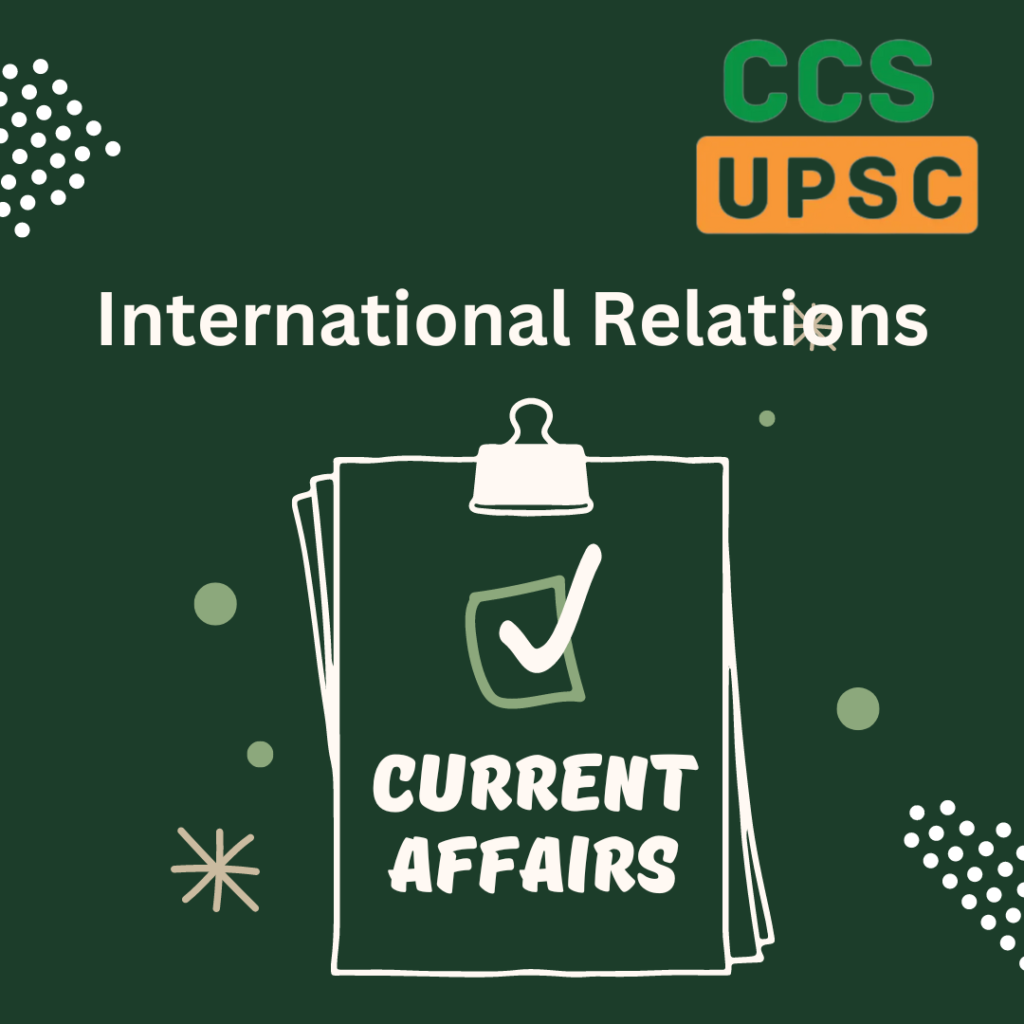Context
∙ India and Iran signed an agreement on the further development of the Chabahar Port.
Chabahar Port
∙ Iran’s Chabahar port is located on the Gulf of Oman and is the only oceanic port of the country.
∙ It is situated in the city of Chabahar in Sistan and Baluchestan Province.
∙ Chabahar has two ports; Shahid Kalantari and Shahid Beheshti.
∙ The former is an old port with limited water front to accommodate feeder vessels.
∙ The Shahid Beheshti Port is being developed in four phases. On completion of all 4 phases, port capacity will be 82 million tons per year.
∙ The port gives access to the energy-rich Persian Gulf nations’ southern coast and India can bypass Pakistan with the Chabahar port becoming functional.
Significance of Chabahar Port for India
∙ Geopolitical Significance: Chabahar Port is strategically located at the crossroads of South Asia, Central Asia, and the Middle East. It provides India with direct sea access to Afghanistan and Central Asia, bypassing Pakistan.
∙ India can bypass Pakistan in transporting goods to Afghanistan.
∙ Gateway to INSTC: Chabahar port will boost India’s access to Iran, the key gateway to the International North-South Transport Corridor (INSTC) that has sea, rail and road routes between India, Russia, Iran, Europe and Central Asia.
∙ Countering China: Chabahar port will be beneficial to India in countering Chinese presence in the Arabian Sea which China is trying to ensure by helping Pakistan develop the Gwadar port.
∙ Gwadar port is less than 400 km from Chabahar by road and 100 km by sea.
∙ Trade Benefit: With Chabahar port becoming functional, there will be a significant boost in the import of iron ore, sugar and rice to India.
∙ The import cost of oil to India will also see a considerable decline.
Brief on India and Iran Relations
∙ Political Relations: India and Iran signed a friendship treaty in 1950. The two countries have in place several Bilateral Consultative Mechanisms at various levels including the Joint Committee Meeting (JCM), Foreign Office
ο Consultations (FOC), Security Consultations at the level of National Security Advisers.
∙ India and Iran also have Joint Working Groups to facilitate cooperation in various important sectors.
∙ Economic Relations: India-Iran bilateral trade during the FY 2022-23 was $2.33 billion, registering a growth of 21.76%.
∙ India and Iran have also been trying to diversify their channels of payment to increase bilateral trade.
ο Energy Cooperation: India has consistently been among the top importers of Iranian oil, although this relationship has faced challenges due to international sanctions on Iran.
ο Regional Stability: India and Iran share concerns and interests in the stability of the region, especially in the context of Afghanistan.
∙ The two nations have collaborated on various initiatives to address common security challenges.
Areas of Concerns
∙ International Sanctions: Iran has faced international sanctions, particularly in relation to its nuclear program.
∙ These sanctions have affected economic relations between India and Iran, especially in the energy sector.
∙ India’s ability to import oil from Iran has been impacted, leading to uncertainties in their energy cooperation.
∙ Geopolitical Challenges: The geopolitical landscape in the Middle East and South Asia has been complex, and both countries need to navigate carefully to balance their regional interests.
∙ Security Concerns: The security situation in the region, including the volatile conditions in Afghanistan, has implications for both India and Iran.
∙ Their cooperation on regional security issues is essential, but differences in strategic perspectives can pose challenges.
∙ Chabahar Port Development: While the development of the Chabahar Port is a significant project, progress has been slower than anticipated.
∙ Impact of External Players: Both India and Iran have relationships with external players that may not align with each other’s interests.
∙ The influence of external powers in the region can complicate their bilateral dynamics and create challenges for mutual cooperation.
∙ Nuclear Deal Uncertainties: The uncertainties surrounding the Iran nuclear deal (JCPOA) and the potential for changes in the international approach toward Iran’s nuclear program can impact the diplomatic and economic relations between India and Iran.
Way Ahead
∙ Although India has followed a balancing act in the Middle East, the evolving geopolitical realignments could pose newer challenges for India to deepen its cooperation with Iran amid escalating tension between Iran and the West.
∙ The relationship faces challenges due to geopolitical dynamics, including the influence of other regional players.
∙ However, both countries continue to explore opportunities for collaboration and economic partnership.












